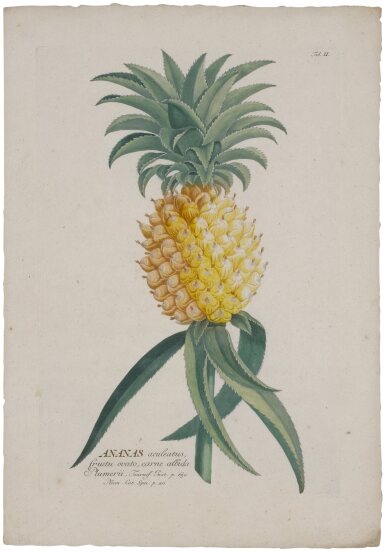
Trew, Christoph Jacob, and Georg Dionysius Ehret | Over one hundred plates from one of the greatest botanical color-plate books
Lot Closed
July 21, 06:43 PM GMT
Estimate
20,000 - 30,000 USD
Lot Details
Description
Trew, Christoph Jacob, and Georg Dionysius Ehret
Plantae Selectae quarum imagines ad exemplaria naturalia Londini in hortus curiosorum. [Nuremberg: 1750-1773]
110 plates (540 x 375 mm). Hand-colored, some titles heightened with gold, with one mezzotint portrait, nine engraved titles lettered in red, black, and gold), two leaves of the "Lectori Benevolo," letterpress text leaves numbered 1-51; some spotting and occasional marginal browning. Plates, titles, and portrait framed and glazed; not examined out of frames, frames drilled.
A set of framed plates from the first edition of one of the greatest eighteenth-century botanical color-plate books.
The Plantae Selectae is considered by Nissen to be the finest botanical work ever printed in Germany. Trew, physician at Nuremberg and amateur botanist, admired the talent and skill of his younger countryman, Georg Ehret, a gardener and flower painter. The present plates represent their major collaboration.
Ehret is one of the great painters of flowering plants in the eighteenth century and all 100 plates of the Plantae Selectae were painted by him. Trew died in 1769, leaving the last three parts uncompleted. The work was finished by Benedict Christian Vogel, Professor of Botany at the University of Altdorf. The work was conceived as early as 1742 when Trew wrote to Christian Thran in Carlsruhe: "Every year I receive some beautifully painted exotic plants (by Ehret) and have already more than one hundred of them, which with other pieces executed by local artists, should later on, Deo volante, constitute an appendicem to Weinmann’s publication but will, I hope, find a better reception than his."
In 1748, an agreement was reached that Johann Jacob Haid from Augsburg should provide the engravings, and the first part appeared in 1750. Trew died before the text of the last three decuriae was written and before the illustrations of Decuriae IX and X were printed.
REFERENCE:
Dunthorne 309; Great Flower Books, p. 78; Hunt 539; Nissen BBI 1997; Stafleu TL2 15.131
You May Also Like










